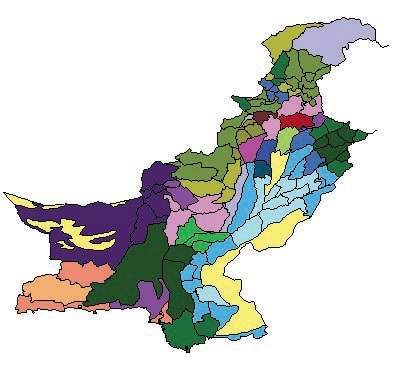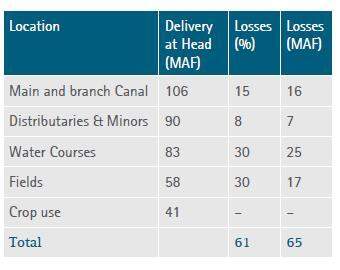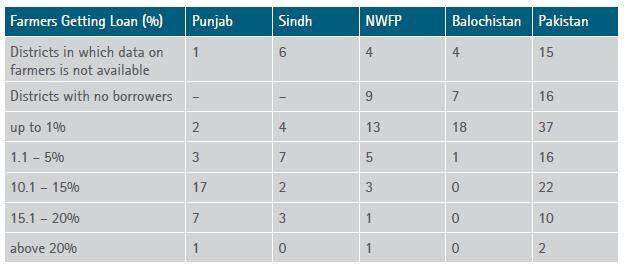
: Dr. Kauser Abdulla Malik, Professor of Biotechnology, Forman Christian College (A Chartered University), who is also member Task Force on Agriculture, was invited to deliver a talk on Challenges of Food Security and Performance of Agriculture: The case of Pakistan on the 25th of February 2009 under the CPPG’s Faculty Seminar Series
Dr. Malik started by highlighting the importance of agriculture in development. Still agriculture had been ignored by domestic as well as international policy makers for the last 25 years partly because of the IT and telecom technology hype leading to funds depletion and resource constraints among agriculture research centers. This trend changed with the World Development Report 2008 brought out by the World Bank titled “Agriculture for Development”, which reinstated the importance of Agriculture. The report established agricultural growth as the main engine for poverty reduction with cross-country econometric evidence indicating that GDP growth generated in agriculture was at least twice as effective in reducing poverty as that generated by other sectors. Additionally 75% of the world’s poor lived in rural areas, mostly working in agriculture. Even with rural urban migration, the majority of the world’s poor would still reside in rural areas at least until 2040. The same was true for Pakistan where almost 44% of the labor force was employed in Agriculture. But the importance of agriculture was not limited to the rural poor as agricultural performance was directly linked to food security, which affected everyone.Dr. Malik defined Food Security within the paradigm of Security, Vulnerability and Insecurity. Food security exists when all people, at all times, have nutritious food that meets their dietary needs and food preferences for an active and healthy life. A community or household became vulnerable to insecurity based on its capacity to withstand frequency and intensity of food price escalations. Vulnerability could lead to transitory food insecurity when there was a temporary inability to meet food needs, or worse chronic food insecurity when there was a long term and persistent inability to meet food requirements.
Food Security revolved around three stated independent dimensions: Availability of food, which was dependent on local production or imports; Accessibility to food, which involved governance and marketing of agricultural products; and Affordability of food, which was based on food prices and income levels. Explaining the rise of international food price index by 40 percent in 2007 and a further increase of about 50 percent in the first three months of 2008, he listed factors including diversion of grain to bio-fuel production, demand shift from traditional staples to high value foods like meat and milk, neglect of agricultural investment for productivity growth, and high income growth in some countries resulting in high food demand. Recognizing the importance of these factors he introduced another factor– Speculation, arguing that within the current system of free market economy, price was not based on real supply and demand. Instead this man made crises was an outcome of futures trading on the Chicago Market where food grains of the coming two years were bought off.
Shifting his focus to Pakistan, Dr. Malik argued that Pakistan’s resource base was not the issue as out of 198 million acres (MA) of land, 48 MA were under crop production, of which 28MA were irrigated and 14MA were salt affected. In terms of water, Pakistan had 100 million acre feet (MAF) availability, 60% of which came from the canal network while 40% came from tube wells. But the importance of canal water could not be overstated as only 25% of groundwater was fit for irrigation, 50% was totally unfit while another 25% was marginally better.
: Pakistan Cropping Pattern

Source: WRRI–NARC / PARC
Legend

The cropping pattern consisted of two major cropping seasons (Kharif & Rabi) in a year supporting multiple combinations of food crops including wheat, rice, pulses and sugarcane. It could be ascertained from production history that over the last fifteen years, crop area of wheat and rice had more or less stayed constant while the yields had increased. In sugarcane though, the increase in area was due to installation of new sugar mills by influential parties against government regulations as sugarcane required more water. The crux of food security though depended on the comparison between production and consumption of major food items. This ratio was quite precarious for pulses (dependent on rain in Barani areas) and wheat, our staple food, while surplus rice was exported generating an income of about Rs. 3 Billion a year.
In evaluating the 2008-09 season for wheat, Malik listed production estimate to be 21.8 million tons (MT) while total requirements were 24.26 MT including human consumption (21.66MT = 130kg/capita for 164.37 million people), seed requirements (1MT = 50kg/acre), poultry feed (0.1 MT), strategic reserves (1 MT) and official exports to Afghanistan (0.5 MT). This left a wheat deficit of 2.46 MT, which was still understated because the actual export to Afghanistan was estimated at 2MT raising the actual requirement to 25.76MT. With the increase in support price from Rs. 625 to Rs. 950, the target of 25 MT fully supporting our needs could be achieved, but it required proper governance leading to availability of fertilizer at the right time and at manageable prices. Governance being our major weakness, this could not be achieved as urea prices were hovering at Rs. 1000-1100 instead of the government’s fixed price of Rs 650 because of a lack of import management, hoarding, manipulation and cartelization.
: Wheat Demand – Supply Situation
Dr. Malik was still cautiously hopeful stating that Pakistan had all the capability of being a wheat surplus country if only we could manage our affairs properly. Though wheat production growth rate had been 2% over the last 10 years, it was not sufficient for food security, which required meeting the Medium Term Development Framework (MTDF) target of 3.8% growth. The MTDF goal could only be met if the 43.5% yield gap (where progressive farmer’s got 4.6 T/ha while an average wheat farmer got 2.6 T/ha) was bridged. By filling this yield gap in wheat and other crops, Pakistan could become not just food secure but also a food export country.
Dr. Malik then articulated the five main issues, which had to be overcome to make this reality possible. Grasping change in the size of Land Holdings was the first. From 1972 – 2000, the number of farms of < 2ha had increased from 28.1% to 57.7%, those of < 5ha had increased from 68.0% to 85.5%, while the total farm area of < 5ha which constituted 30.4% in 1972 had changed to 43.4% in 2000. Changes in farm size distribution thus warranted a different strategy for delivery of inputs and services as well as marketing of agricultural produce, rather than ignoring the major chunk of our farmers while concentrating on the large farmer. The second issue was the Cost of Production. Resources for agriculture included land, water, and inputs including fertilizer, certified seed, mechanization and credit. With negligible increase in the cropped area, population growth of 2.4%, loss of cultivated land due to urbanization, industrial and infrastructure development, the cropped area per capita was decreasing at 1.8% a year such that in 2004-05 the cropped area per capita was 0.14ha compared to 0.21ha in 1985-86. Linking cost of production with Slow Adoption of New Technologies, he argued that out of 106 MAF of water, the actual crop use of water was only 41 MAF, a colossal loss of 61%. Further
____________________________
-
-
-
-
Growth rate in wheat production for the last 10 years has been 2%.
-
MTDF has set a target of 3.8% annual growth rate for wheat.
-
Demand includes:
-
Human Consumption at 130kg/person; Seed (1.0 million Tons); Strategic Reserves (1.0 million Tons); Exports to Afghanistan and Poultry Feed (0.8 million tonnes)
-
-
-
____________________________
demonstrating the lack of water conservation technology use, he listed figures for Cereal Production (kg) per m3 of Irrigation Water. Canada stood at 8.72, USA 1.56, China 0.82, India 0.39 while Pakistan was at 0.13. A similar situation existed for fertilizer. Though growth in fertilizer use (kg/ha) stood at 4.1%, the crop yield for wheat only grew by 1.7% from 1985-86 to 2005-06 and even lesser for other crops. This inefficiency in fertilizer use disproportionately increased production costs and could only be tackled through application of new methodologies and technologies. These included application of micronutrients, promotion of bio-fertilizers, fertigation to reduce nitrogen nutrient losses and development of site specific fertilizer recommendations based on soil testing.
: Table 01 Losses in Irrigation System
Source: MTDF (2005–10) Planning Commission
: Table 02 Agriculture Credit Outreach by Province / District
Source: State Bank of Pakistan
“Can any industry in the country survive without provision of credit? If not then why was it expected from agriculture?”
But for Dr. Malik, the crux of the issue lay in Agricultural Credit. He posed a question “Can any industry in the country survive without provision of credit”? If not then why was it expected from agriculture? He argued that only 4% of banks’ credit portfolio was disbursed amongst the farming community. Even after a lot of hew and cry, during 2007-08 (July 07- May 08), loans worth Rs.184.9 billion had been disbursed, which were only 56% of MTDF target for the year. The loan distribution though was even worse with Punjab getting the dominant share with 83.49%, Sindh 11.63%, NWFP 4.31%, Baluchistan 0.33%, AJK 0.23% and GilgitBaltistan 0.10%. But even in Punjab, the distribution was only restricted to certain districts as shown in the table. Marketing, facilitating farmers to sell their produce at market prices and Climate Change, leading to a perpetual change in weather affecting all crops of the country completed the five main issues.
Discussing the strategy to alleviate food insecurity, Dr. Malik argued for a combined effort to increase agricultural productivity, to timely announce indicative prices for wheat, oilseeds and pulses and to create a food safety net for the poor. A safety net was needed because the overall poverty incidence of 22.3% (reference to Rs. 944.47 per person per month) had further increased because of an 18.3% increase in Consumer Price Index (CPI) since 2005-06.
He further suggested institutional reforms in the sector focused on credit outreach increase, improving governance, forming village organizations and introducing corporate farming. He argued that Village Organizations would increase farmer returns by exploiting economies of scale in purchasing inputs and marketing outputs. He gave the example of the unorganized dairy farmers who sold milk at Rs. 14 – 18 per litre while packed milk was sold to consumers at Rs. 46 per litre, arguing that a lot of room existed in increasing the share of the producer. Vertical integration with processing sector would improve farmer productivity but the share of benefits depended on farmers’ negotiating power.
He argued that the suggested model of corporate farming was misunderstood as it did not imply inviting foreign investors to take over agriculture in Pakistan, but instead facilitating increasing number of resource poor farmers (86 percent have less than 12.5 acres and 39 percent fragmented), whereby farmers would become shareholders of the corporation, retain land ownership while land was managed by professionals with better access to technology and credit. This would encourage vertical integration (i.e. milk, fruits & vegetable processing) resulting in increased output and landowners’ income, as well as benefit consumers through relatively lower prices.
He ended his talk with a quote from Mr. Sartaj Aziz “ Countries in which land distribution is highly skewed and inequitable, prospects of reducing rural poverty will remain very dim. …Big farmers invariably pre-empt a much larger share of irrigation water, inputs, credit and marketing opportunities. Without wide ranging agrarian reforms, only limited progress can be made towards the objective of reducing poverty.”
The talk was followed by Question-Answer session. When a participant asked, “Has the age of Land Reforms past?” he argued that for institutional reform of the agriculture sector, the issue was of a feudal society in which land was not the sole criteria. The “Chaudhry culture” pervaded every village of the country irrespective of land size. Thus a conscious effort through increased awareness and education was needed to speed up the historical evolution as only a large middle class and an educated society could change this culture. Similarly institutional arrangements in professional departments needed to change whereby departments such as Pakistan Agriculture Research Council (PARC) and Soil Survey of Pakistan should be headed by relevant professional experts and top class scientists rather than by bureaucrats.
Answering another question, he argued that there was a difference between speculation and forecasting. While speculation was an outcome of monopolization and cartelization where market was artificially manipulated, forecasting was instead a scientific method for understanding trends.
Responding to a question on Decentralization and the lack of farmer involvement in agriculture policy, he agreed that there was no justification of having Ministry of Agriculture in Islamabad, but the fault rested with the whole system. In the absence of a collective of village level organizations or a political party with genuine grassroots in the farming community, even decentralization would lead to similar ad-hocism. Instead, institutionalization of farmer’s input was needed in policy making which was only possible when legislatures came from the ordinary farming community.
“Countries in which land distribution is highly skewed and inequitable, prospects of reducing rural poverty will remain very dim. … Big farmers invariably pre-empt a much larger share of irrigation water, inputs, credit and marketing opportunities. Without wide ranging agrarian reforms, only limited progress can be made towards the objective of reducing poverty”
Citations



